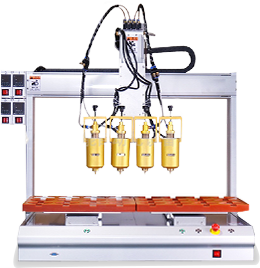

Metal pipe fittings automation equipment parts are important basic components in the field of industrial automation. Metal pipe fittings are made of high-strength materials such as stainless steel and alloy steel, and are processed by advanced technology. They have excellent pressure resistance and corrosion resistance and are suitable for fluid transmission and gas transportation. Automation equipment parts cover a variety of functional components such as transmission, support, and connection. Through precision manufacturing, they ensure efficient and accurate operation of automation equipment with high precision and high stability, and are widely used in various industrial production scenarios.
Support a variety of specifications and sizes, the diameter of metal pipes ranges from 10mm to 200mm, and the wall thickness ranges from 1mm to 10mm; automation equipment parts can be customized according to customer needs. At the same time, the product can adapt to different brands and models of automated production lines, and has strong compatibility. Some common specifications and parameters are as follows:
Type | Material | Size range | Main application scenarios |
Stainless steel elbow | 304 stainless steel | Φ15 - Φ150mm,90°/45° | Fluid pipeline steering |
Alloy steel shaft | 42CrMo | Diameter 15 - 80mm, Length 50 - 500mm | Automated transmission system |
Tee fittings | 316L stainless steel | Φ20 - Φ100mm | Pipeline diversion and merging |
III. Product Details
1. Material Type
Metal pipe fittings:
304 stainless steel: has good corrosion resistance and comprehensive performance, can adapt to general industrial environment and humid places, and is often used in fluid conveying pipelines in food, chemical, water treatment and other industries.
316L stainless steel: adds molybdenum element, has stronger resistance to strong corrosive media such as seawater, acid and alkali, and is suitable for harsh environments such as marine engineering and chemical equipment.
Automation equipment parts:
Alloy steel: such as 42CrMo, 35CrMo, etc., has high strength and good toughness after heat treatment, and is suitable for manufacturing transmission parts that withstand high loads and high speeds, such as gears and shaft parts.
Stainless steel: 304, 316L and other stainless steel materials have good corrosion resistance and rust resistance, and are suitable for automation equipment in food, medicine and other industries with high requirements for cleanliness.
2. Processing technology
Metal pipe fittings: adopt cold bending, hot pressing, welding and other processes. The cold bending process can ensure the dimensional accuracy and surface quality of the pipe fittings; the welding process uses argon arc welding and laser welding, the welds are uniform and firm, the sealing is good, and zero fluid leakage is ensured.
Automation equipment parts: Using five-axis CNC machining centers, precision grinding, EDM and other technologies, complex parts use precision casting and powder metallurgy processes to achieve high-precision molding to meet the strict requirements of automation equipment.
3. Quality inspection
Metal pipe fittings: Conduct pressure resistance test (pressure range 5 - 30MPa), airtight test (leakage rate ≤0.01mL/min), and salt spray test (corrosion resistance time ≥72 hours) to ensure that the pipe fittings are safe and reliable under various working conditions.
Automation equipment parts: Use three-coordinate measuring instrument to detect dimensional accuracy, use spectrometer to detect material composition, and conduct hardness test, dynamic balance test, fatigue life test, etc. to ensure that the performance of parts meets the design standards.
 Headquarters tel.
Headquarters tel. E-mail.
E-mail.